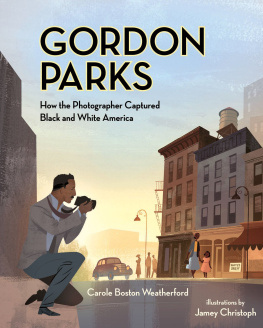Represented
AMERICAN BUSINESS, POLITICS, AND SOCIETY
Series editors: Andrew Wender Cohen, Shane Hamilton, Kimberly Phillips-Fein, and Elizabeth Tandy Shermer
Books in the series American Business, Politics, and Society explore the relationships over time between politics, society, and the creation and performance of markets, firms, and industries large and small. The central theme of this series is that culture, law, and public policy have been fundamental to the evolution of American business from the colonial era to the present. The series aims to explore, in particular, developments that have enduring consequences.
A complete list of books in the series is available from the publisher.
REPRESENTED
The Black Imagemakers Who Reimagined
African American Citizenship
Brenna Wynn Greer


This book is made possible by a collaborative grant from the
Andrew W. Mellon Foundation.
Copyright 2019 University of Pennsylvania Press
All rights reserved. Except for brief quotations used for purposes of review or scholarly citation, none of this book may be reproduced in any form by any means without written permission from the publisher.
Published by
University of Pennsylvania Press
Philadelphia, Pennsylvania 19104-4112
www.upenn.edu/pennpress
Printed in the United States of America on acid-free paper
10 9 8 7 6 5 4 3 2 1
A catalogue record for this book is available from the Library of Congress.
ISBN 978-0-8122-5143-2
To my students,
of course
Contents
I never set out to write a book about the image-management and image-making work of black capitalists and entrepreneurs. This project grew out of an extended battle I waged with a single photograph of the civil rights activist Rosa Louise McCauley Parks taken the morning of December 21, 1956, the day that African Americans in Montgomery, Alabama, ended their 381-day boycott of the citys buses, following the United States Supreme Courts decree that segregated buses were unconstitutional. That morning, reporters tracked Parks down at her home in the Cleveland Court projects and cajoled her to come downtown, where she got on and off buses so they could take pictures. The symbol shot photograph works symbiotically with popular histories of Parks as the mother of the civil rights movement, in which she figures as a respectable, saintly elderly woman who single-handedly launched the modern black freedom movement. Her symbol shot representation obscures her activities as a lifelong radical activist who devoted her energies to combatting racism, civil rights violations, and sexual abuse of black women. The photograph also overshadows, if not completely obscures from view, the extensive organizing by countless others that culminated in and sustained the Montgomery bus boycott of 195556, the protest event many associate with the beginning of the modern civil rights movement.
Like many, I grew up with the ideal of Parks as a courageous but accidental activist, and I held itdiscouraged by no oneinto adulthood and through more than a few history courses. Only when I began researching black womens activism in Montgomery did the myth crumble. I came to view Parkss symbolic nature as particularly problematic in its falsehood and its power to exclude. This exclusionary power became most apparent (and frustrating) in the classroom, where the mythic Parks spawned further myths about the Montgomery bus boycott and the larger civil rights movement.

Figure 1. Rosa Parks seated on bus in Montgomery, Alabama, December 21, 1956. Getty Images.
In her iconic form, Parks has value as an inspiring and commemorative figure based in certain truths. She is also, however, a flat, simplistic representation that encourages similarly simplistic narratives of black protest and the black freedom struggle. The symbolic Rosa Parks belongs to a set of mythologized historical black figures, including Harriet Tubman, Booker T. Washington, Martin Luther King Jr., and Malcolm X, whose stories obstinately form the entirety of too many of my students knowledge, regardless of race, concerning African American history and the black freedom struggle. From where did these black figures derive their defining power? The answer to this question varies across time and context, but media representations of black civil rights activists operating after World War II, such as Parkss symbol shot, remain a primary engine fueling the longevity and potency of these activists symbolic power.
Many of the images of postWorld War II civil rights activism or activists that we now consider iconic circulated through white media channels. It is tempting, therefore, to assume that images such as Parkss symbol shot, which have thwarted complex histories that might be useful for negotiating subsequent struggles, were the creation or the imposition of white journalists, photographers, and editors. To the contrary: these images were very much the product of African Americans carefully cultivating (or performing) media representations of blackness that they deemed politically expedient given immediate civil rights concerns. Why did the civil rights activists we associate with the classic period of the civil rights struggle (approximately from the 1954 Brown v. Board of Education decision through the 1968 assassination of Martin Luther King Jr.) produce, perform, or promote the images of blackness they did, particularly since many of these images now prop up faulty narratives of them and their struggle? What cultural and economic resources, social circumstances, and political objectives shaped their politics of image? What theories and tactics determined how they elected to represent blackness? These questions transformed what I had originally imagined as an analysis of the image strategies of civil rights activists into a study of black professional imagemakers and their image products. This shift in direction occurred because my efforts to identify the sources for, or the products of, representation politics (by which I mean theories and tactics of image or imaging) central to African Americans campaigns for first-class citizenship and national belonging consistently led to the imagemaking enterprises of black market-based cultural producers. Attached as I was to my activist subjects, initially I interpreted these findings as detours, distractionsthe ever-threatening rabbit holes common to historical research. Only when I accepted the oft-recurring pattern that emerged did I understand that mine is a story of how primarily nonactivist African Americans produced media representations of black people and black life that activists enacted during the drama that was the postwar civil rights movement.
The preponderance of civil rights literature focuses on grassroots activism and highlights resistance; consequently, nonactivists and, especially, unabashed capitalists have been neglected and even unwelcome in the story. If these figures do appear, it is generally as individuals who used their money to fund or protect other African Americans in their activism. Their exclusion reflects three distinct but related interpretive boundaries that have long hindered understanding of the various ways African Americans have combatted racism and pursued first-class citizenship: the assignation of activist motivations to black actors despite more convincing explanations; the notion (and fear) that to highlight African Americans capitalism is to impugn their character and negate the heroism historians spent so much time and energy unearthing; and discomfort with or outright rejection of the inherent relationship of capitalism to modern civil rights politics. To exile capitalists and capitalism, however, prevents an understanding of how, in addition to marching in the streets, blacks pursued their freedom by participating in political, corporate, and even racist or sexist agendas. In the past half century, scholars have unearthed multitudes of everyday participants who advanced the struggle through all manner of activities, across various sites. Yet the reigning civil rights story remains one of how blacks opted out: the struggle, we are to believe, has always been activist inspired, oppositional, and uncompromising. The trend reflects a larger cultural investment in the ideal of a pure civil rights movement, clearly understood as a moral campaign of progressive good against past evil that occurred outside or in direct opposition to institutions of corruptive power, such as capitalism or white power. It is as if accepting that African Americans used the market and principles of profit to realize their full citizenship somehow taints the cause. Desire for civil rights stories that either redeem or vilify the figures at the center of those stories precludes messier but more useful narratives about how African Americans existed in relation to the state and the market.
Next page







